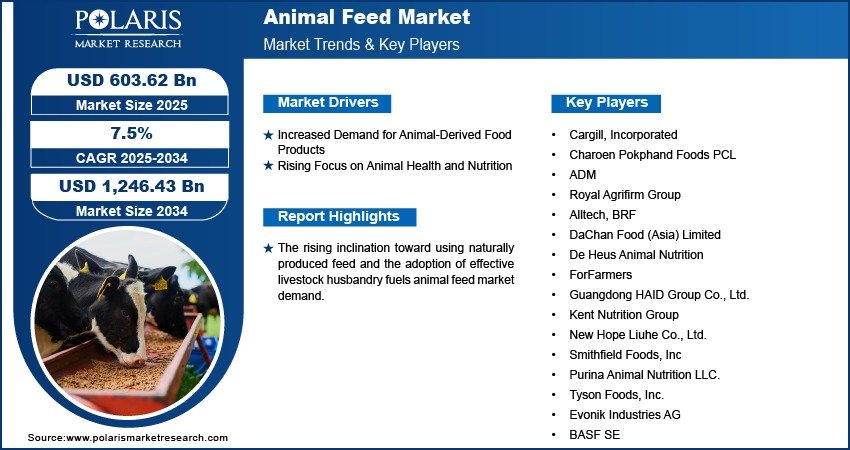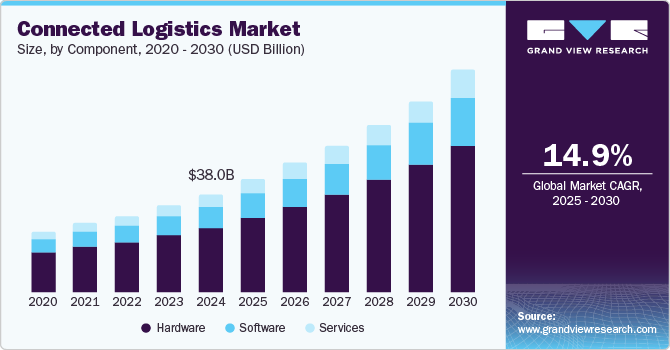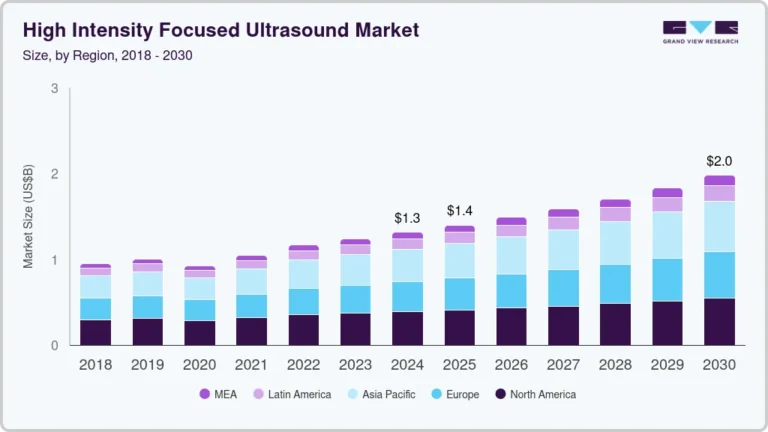Animal Feed Market Projected to Reach USD 1,246.43 Billion By 2034, Growing at a CAGR of 7.5%

The global Animal Feed market was valued at USD 557.67 billion in 2024 and is projected to grow from USD 603.62 billion in 2025 to USD 1,246.43 billion by 2034 , exhibiting a Compound Annual Growth Rate (CAGR) of 7.5% during the forecast period from 2025 to 2034 .
- Rising Demand for Animal Protein: The growing global population and increasing per capita consumption of meat, dairy, and eggs are driving the demand for high-quality animal feed to ensure efficient livestock production.
- Advancements in Feed Additives and Nutrition Technology: Innovations in feed formulation, including probiotics, enzymes, amino acids, and mycotoxin binders, are enhancing animal health, productivity, and feed conversion ratios.
- Sustainable and Organic Feed Solutions: With rising awareness about food safety and environmental sustainability, there is an increasing shift toward organic, non-GMO, and plant-based feed ingredients.
- Expansion of Intensive Farming Practices: The adoption of intensive and commercial farming systems, particularly in Asia Pacific and Latin America, is boosting the demand for compound and balanced animal feed.
- Government Regulations Promoting Feed Safety: Stringent regulations regarding feed quality and safety across regions are encouraging manufacturers to adopt standardized production practices and invest in R&D for safer and more effective feed solutions.
- Market Size in 2024 – USD 557.67 billion
- Market Size in 2025 – USD 603.62 billion
- Projected Market Size by 2034 – USD 1,246.43 billion
- CAGR (2025–2034) – 7.5%
The animal feed industry plays a critical role in supporting the global livestock sector by providing nutritionally balanced feed formulations that enhance animal growth, reproduction, and overall health. The market encompasses a wide range of products such as concentrates, forages, supplements, and complete feeds used in poultry, swine, cattle, aquaculture, and pet food industries.
Technological innovation is playing a pivotal role in shaping the future of the animal feed market. Companies are investing in biosecurity measures, feed additives, and sustainable sourcing strategies to meet evolving consumer preferences and regulatory requirements. Moreover, strategic partnerships between feed manufacturers and biotechnology firms are accelerating the development of functional feed ingredients that improve gut health, immunity, and performance in livestock. As emerging economies expand their agricultural sectors and increase investments in animal husbandry, the market is expected to witness robust growth over the coming decade.






